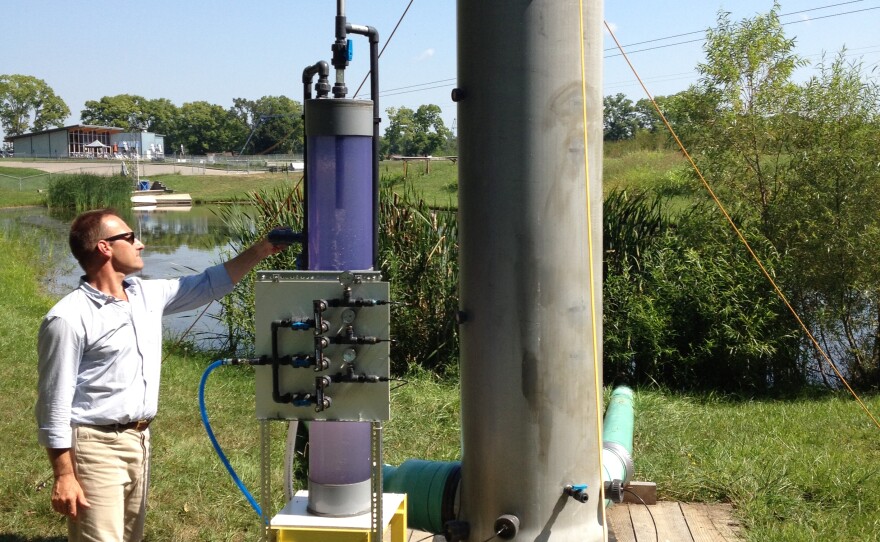The most recent statistics show the Tri-State has the highest concentration of water technology patents per capita in the United States. As of October, 2010, the number stood at 687, according to the United States Patent and Trademark Office.
- Cincinnati 258
- Dayton 40
- Columbus 76
- Lexington 38
- Louisville 80
- Frankfort 11
- Indianapolis 184
This number continues to grow and Confluence, a local water technology cluster, says new companies are helping drive the local economy. Here are two of them:
Vacuum AirLift
Unless they're looking for it, wake boarders at Fairfield's Wake Nation won't even see it. Way off to the side in a separate pond is a 13 foot tube, hooked to a generator. Frenchman Emmanuel Briquet is the brother-in-law of Wake Nation's owner and says, "The beauty of it is its simplicity."
Briquet is a marine biologist and former fish farmer in the Mediterranean. He became aware of a technology that cleans lots of water, quickly, economically and without chemicals. He says it removes microscopic particles not sucked out by other cleaning systems. Briquet is now developing a Vacuum AirLift. Here's how it works:
- Two tubes pull in dirty water from a pond.
- Air is injected, creating a column of water.
- The column acts like a circulating pump and shakes up the molecules.
- Micro-bubbles are inserted to extract dirty gases from the water.
- A foam is created preventing dirty particles from going back into the pond
Briquet's partner, John Brooks, sees many applications for this machine, including harvesting the algae for fish and shrimp farming, and biofuel production, frack water cleanup, drinking water systems, desalination and oil removal. He says,“We really believe that this is a game changing technology that can do good for society, not just make us some money.”
Brooks and Briquet plan to market the Vacuum AirLift in the U.S. and South America.
Liquid
Jacob Shidler's passion for water took him to a series of remote islands off the eastern coast of Africa. For his master's thesis he self-funded a trip to the Comoros Islands to study how materials used for rain water collection affects its drinkability. He remembers collecting his first sample, which came out clean, and then being asked about it by the translator. Shidler said, “And there were about 50 Comorans around us and he turns and yells 'c’est bonne' and a bunch of Shikomor, which is their language, and the whole crowd erupts and there’s dancing and I’m like, it’s only the first sample.”
http://vimeo.com/69625643
Shidler's new company, Liquid, is about more than just water. He and software engineer Caleb Lenoir are creating an app and storage cloud for other researchers and citizen scientists. The company was selected to go through the UpTech accelerator.
Lenoir and Shidler plan to test the new app and subscription-based cloud at Northern Kentucky University. They say Liquid is out to change the way the world does science, and inspire and empower people to learn about the world.








